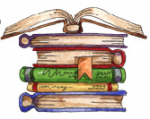Math:
This week, we continued practicing the important addition strategy: counting on. We learned how to use our red quilt cards to increase our fact fluency.

We also spent time studying subtraction stories that involve objects being taken away. Our first graders learned to represent this thinking with a circle drawing, break-apart stick, and minus sign right through the circles that were taken away:
We emphasized that a subtraction equation always begins with the total and then we figure out the missing partner. An addition equation solves for a missing total.
Reading:
We added to our accuracy strategies this week. Flippy the Dolphin is a great strategy to use when readers are stretching out a word. Readers can first try the short vowel sound and if that doesn’t sound right, they can FLIP IT and try the long vowel sound. Most importantly, when they have a good guess of what they think their tricky word is…they need to be careful. Careful Caterpillar reminds readers to make sure that all of the word parts match with their guess.
Writing:
We learned how to finish our stories with a special ending. Our endings help “tie a bow” to our stories and help the reader know that our story is finished. Sharing special thoughts or feelings at the end of our story is a good way to finish.





